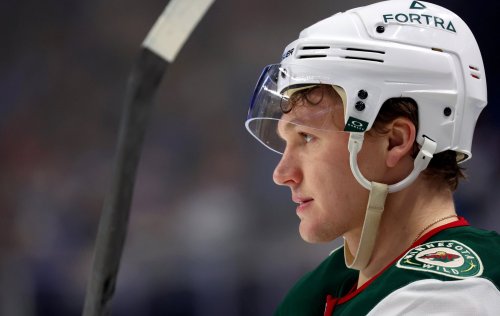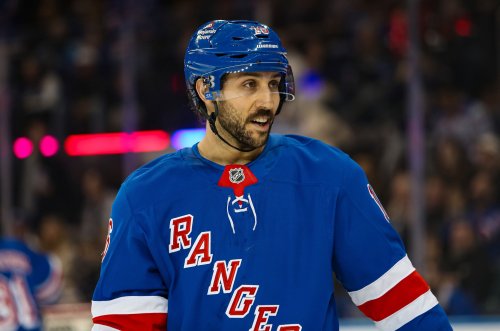
Bruce Boudreau is a shuffler of lines. If a player is playing well, he gets moved up. Or put on a line that is struggling to get going. Or if a player is struggling, Boudreau will stick him with some of the best players to get him going. Despite all the line shuffling, Boudreau has (mostly) kept focused on some core pairs and made it work around them. Staal and Zucker anchor the top line and Parise and Koivu the second, everyone else fills in around them.
Bruce Boudreau is a great coach and I naturally assume he knows best. However, after reading Ryan Stimson’s piece on the Athletic applying some of the work Dawson Springings presented at the RIT Hockey Analytics Conference in 2016 regarding line compilations, I wanted to apply his approach to the Wild. Stimson applied Springings’ work to the Buffalo Sabres and his basic premise was that the Sabres were wrong to overload their top line with Skinner-Eichel-Reinhart and rather should divide playdrivers like Eichel and Reinhart. One of his propositions is that Jason Pomminville should be on the Sabres’ top line and, well, it has been paying results in a short sample.
Now, the Wild are a better team than the Sabres with more talent throughout their roster, but I couldn’t help but think if there wasn’t a better way to build the Wild lines, so I decided to apply the same premise to the Wild and see what lines I came up with.
The Model
My two takeaways from Stimson’s article and Springings’ research are: (1) that you get more bang for your buck if you balance and deepen your lineup; and (2) you should identify the players who can help drive play and that complement the other players on that line. The idea of balancing and deepening your lines isn’t radical, in fact Boudreau is doing exactly that when he took Granlund off the first line and put him on the second line.
Playdrivers are not necessarily the players who put up the most points, but rather the players who can help tilt the ice in his team’s favor and put his linemates in a position to capitalize on their talents, such as whipping a one-timer past the goalie (cue Let’s Go Crazy Crowd Chant). The simplest metric for this are possession stats such as Corsi or Fenwick which are based on shot attempts. These are illustrative, but are not comprehensive states. Fortunately for us, people have been attempting to refine these statistics and account for other variables such as zone starts, score effects, and the chance a shot has of scoring. I’ll be using the same model Stimson used, Micah Black McCurdy’s (aka @ineffectivemath) Magnus Prediction Model.
The model helps to isolate where a player is contributing on the ice and whether he is a driver of that line or if he is helped along more by teammates. Basically, the model attempts to isolate a player’s impact on both offense and defense. So if we look at Zucker’s stats above, we see that his Raw numbers indicates he generates 5.5% more threatening offense than league average while opponents generate 17.5% less threatening offense than league average when Zucker is on the ice. As we look at Zucker’s Isolated and Teammates stats, we see Zucker is more responsible for contributing to that offense, while his teammates have been contributing more of the defense. Please note, the numbers used in the model and from the 2016-17 and 2017-18 seasons.
Building Minnesota’s Lines
Some of the results are unsurprising, Koivu is a defensive monster who should have won the Selke (#KoivuforSelke) and Chris Stewart was, well, he was great in the locker room but not on the ice.
So let’s build our lines around the Wild’s centers. Staal and Koivu will anchor the top two lines, and Fehr the fourth, but my biggest issue was who to plug in at third line center, since it has been a carousel of players. I settled on slotting Joel Eriksson Ek there as he passes the “eye-test” as a center and the team envisions him settling into that role, so let’s see if we can set him up for success in that role. With our centers established, let’s break down the lines:
Zucker - Staal - Coyle
Basically, Staal is an offensive player, but that offense comes at the cost of his defensive production. Zucker is a balanced player who is a driver on both offense and defense, but leans more offensive. As for Coyle, he is a passenger. His offensive and defensive impact are propped up by his teammates. He clearly has skill, but the numbers make it clear he should not be tasked with driving a line by himself (this is also apparent to anyone who has watched the Wild recently). This line leans more offense, but should be respectable defensively.
Greenway - Koivu - Granlund
Koivu smothers opponents’ offense like Chief smothers McMurphy at the end of One Flew Over the Cuckoo’s Nest (spoiler alert), while Granlund makes sweet, sweet offensive magic. Between the two of them, they can carry Greenway whose numbers are a mess of small sample size, but he seems to be decent at generating offence while his defensive impact actually looks quite good. Koivu shutting down the opposition, Granlund dishing, and Greenway driving pucks home in front of the net? Sounds like it could work.
Parise - Eriksson Ek - Niederreiter
Eriksson Ek wasn’t great last season, but it appears he was largely being dragged down by his line mates. So rather than stick him with the Chris Stewarts of the world, let’s see if we can’t do better. Enter Nino Niederreiter. Nino manages to be an offensive driver while being defensively sound. His biggest problem? He’s not a prolific scorer, so let’s add some offensive impact to the mix with Parise. Here is where we really begin to see the fruit of our labors. The top two lines look good, but this looks like a lethal third line that can feast on opposition, if only they get decent ice time.
Foligno - Fehr - Brown
Foligno generates little no offense but his defense is largely fine. Fehr is...basically the same. And Brown does....pretty much the same thing. While the model doesn’t provide enough data on Kloos, Rau, or Anas, looking at the other players on this line, it seems like the Wild could gamble on putting one of those players in there and add some offensive pop to a line that currently lacks it.
Conclusion
I went into this assuming the model would tell me to give Nino Niederreiter all the minutes, but instead it really confirms a lot of what we already knew. Staal gives us a lot of offense, and Koivu can cover more offensively minded players. Nino does help tilt the ice, but it still made the most sense to put him on a line with a weaker center to help drive play. I was surprised that Coyle really does not push play on either end of the ice, and that Eriksson Ek was weighed down by his teammates to such an extent last year.
Are the lines I assembled perfect? No. This lineup is about balance and envisions and more even distribution of ice time. When games come down to the wire, it makes sense to load up your lines and shorten the bench. With five minutes left, swap Coyle and Nino, put Parise with Koivu and Granlund because those lines are objectively more effective, but by spreading the wealth throughout the game, you can possibly get more out of each player and suddenly the whole becomes greater than the sum of its parts.
Think you could write a story like this? Hockey Wilderness wants you to develop your voice, find an audience, and we'll pay you to do it. Just fill out this form.








Recommended Comments
There are no comments to display.
Join the conversation
You can post now and register later. If you have an account, sign in now to post with your account.
Note: Your post will require moderator approval before it will be visible.